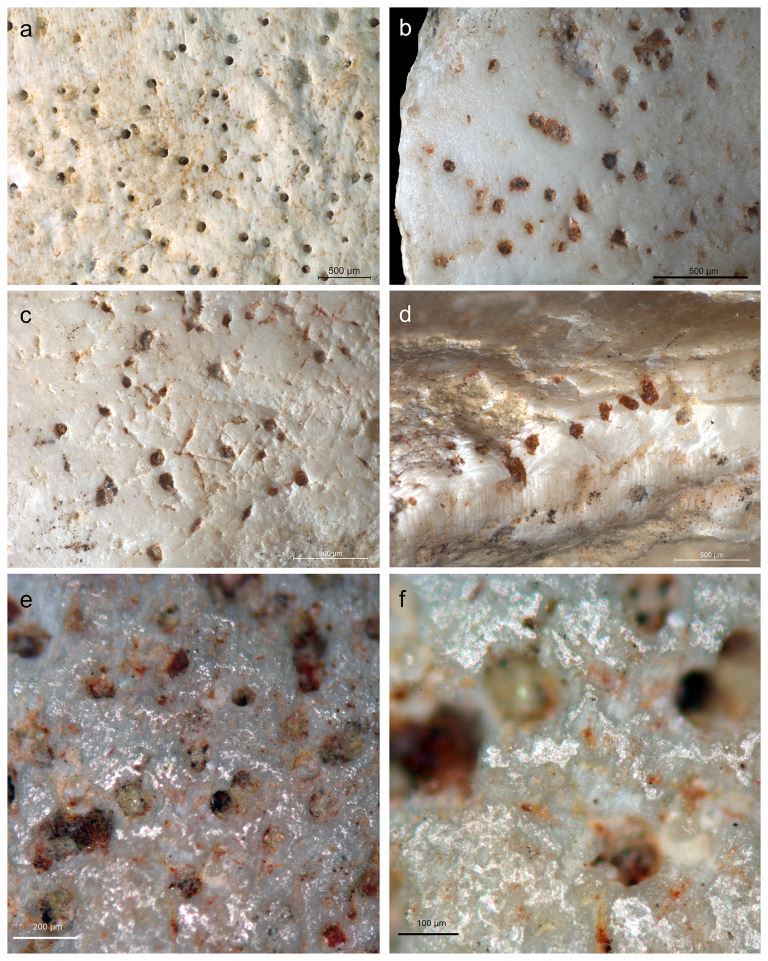I don’t own much jewelry – probably because I’m not often inclined to wear it. And what I do have is mostly old, passed down from my mother & her mother before her. Old, but not anywhere near the age of the find reported in PLoS ONE by Marco Peresani and his colleagues (2013).
The authors begin by noting that
Neandertal symbolic behaviour is a controversial issue that has attracted much debate over the last thirty years
and this has certainly being the case, with arguments ranging from the proposition that Homo neanderthalensis had no symbolic behaviour at all, to suggesting that the available evidence implied a number of such behaviours. Peresani et al. cite a range of sources in support of the latter view, including finds of grave goods in Neandertal burials, and the use not only of pigments such as ochre, but also of containers for those pigments and tools used in processing them.
The paper describes a find from Fumane Cave in northern Italy, a site where archeologists have been working for 20 years on a 2.5m-deep series of deposits that range in age from 300,000 to around 50,000 years ago. The cave was inhabited by Neandertals and – more recently, Homo sapiens – and contains a range of stone tools and other cultural artefacts.
However, the authors focus on a find from a layer in the cave that’s associated with late Neandertal habitation, characterised by tools from what’s known as the Mousterian culture. And here they found a shell; a shell that would have been collected as a fossil: Aspa marginata is common in Miocene & Pliocene fossil assemblages (23.3-5.3 million years ago) and could not have come from the early Jurassic rocks in which Fumane Cave formed (the Jurassic extended from 200-145 mya).
In addition, the shell itself appears to have been uniformly stained with red ochre (haematite) and quite possibly pierced so that it could be hung on a thong (& so presumably worn as a personal ornament). The evidence? The inner lip of the shell has a number of striations, not found anywhere else on the shell or on any shells in the reference collection that the researchers compared it to. They interpret these microscopic patterns as due to scratching, perhaps due to tiny abrasive fragments in the ochre, when the shell rubbed against a suspending sinew that passed through a (now missing) hole in the lip of the shell.
For the shell had been covered with red ochre. The evidence for this lies in tiny pits that formed over the shell’s surface soon after the snail died. And the pits are filled with iron oxide (haematite) – the researchers think that the originally the whole shell was deliberately stained red, & that subsequent wear & later erosion in the cave sediments removed the colour from the outer surface but not from the pits.

From Peresani et al (2013): Figure 6: Outer surace of an Aspa marginata shell from the reference collection (a) and from the Fumane specimen (b-f) doi: 10.1371/journal.pone.0068572.g006
Their conclusion:
analysis of the Aspa marginata found in Fumane… shows that this fossil gastropod was collected by Neandertals… at a Miocene or Pliocene fossil outcrop, the closest of which is located more than one hundred kilometres from the site. The shell was smeared with a pure, finely ground hematite powder, probably mixed with a liquid. It was perhaps perforated and used as a personal ornament before being discarde, lost or intentionally left at Fumane Cave, some 47.6-45.0 [thousand years before the present day].
…
Thus, this discovery adds to the ever-increasing evidence that Neandertals had symbolic items as part of their culture. Future discoveries will only add to our appreciation of Neandertals’ shared capacities with us.
Peresani, M., Vanhaeren, M., Quaggiotto, E., Queffelec, A., & d’Errico, F. (2013) An Ochered Fossil Marine Shell from the Mousterian of Fumane Cave, Italy. PLoS ONE 8(7); e68572. doi: 10.1371/journal.pone.0068572

herr doktor bimler says:
And what I do have is mostly old, passed down from my mother & her mother before her.
…whereas some of us inherited the pewter whisky tumblers passed down by our grandfathers.